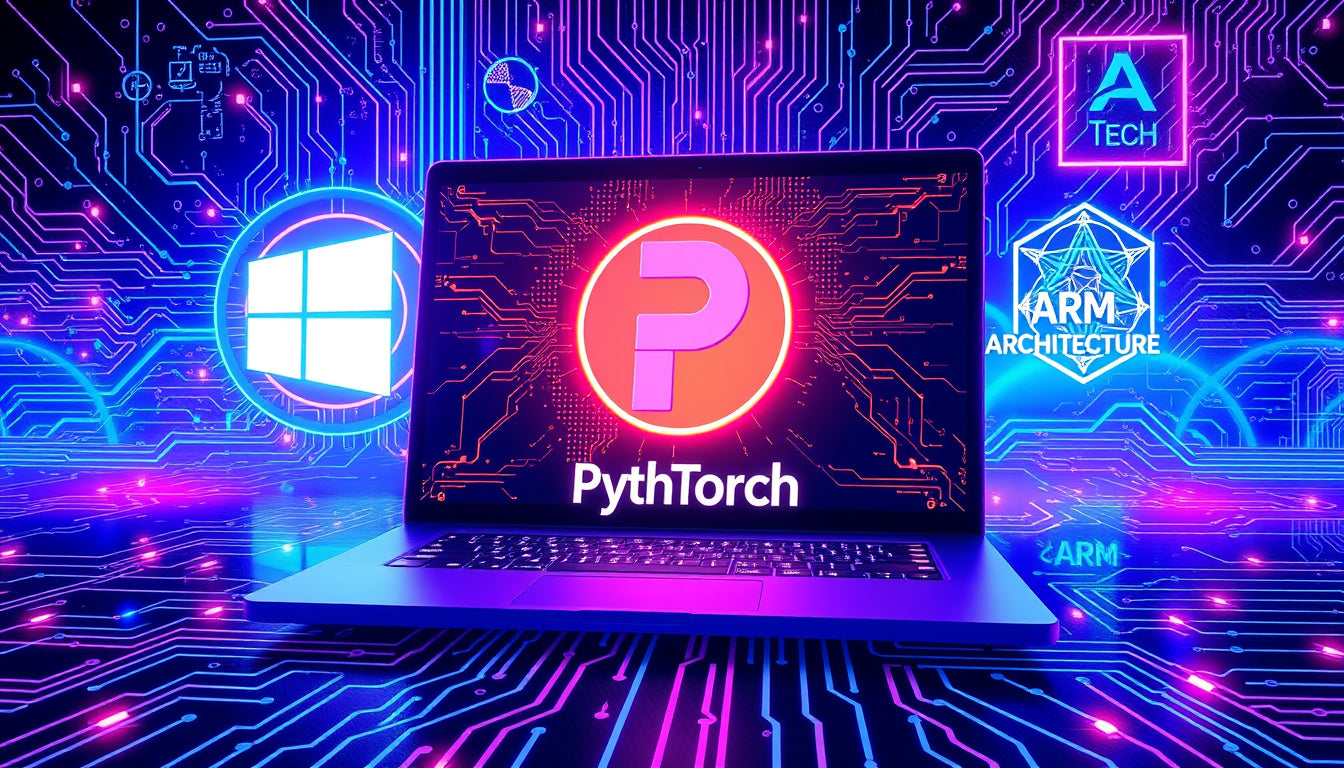In a rapidly evolving technological landscape, artificial intelligence (AI) continues to push the boundaries of innovation across various sectors. For Canadian small and medium business owners keen on leveraging machine learning to enhance their operations, the recent launch of Arm native builds of PyTorch for Windows Arm64 presents a significant opportunity. With PyTorch
2.7, developers can now access pre-compiled versions tailored for the Windows Arm64 architecture, eliminating the previous hurdles of local compilation. This advancement is particularly beneficial for those engaged in tasks such as image classification, natural language processing, and generative AI, empowering them to unlock the full potential of their Arm64 devices. In the following sections, we will explore how to get started with these Arm native builds, detailing the installation process, prerequisites, and exciting application examples that can elevate your AI projects.

Key Takeaways
- Arm native builds of PyTorch for Windows Arm64 are now available, simplifying the installation process.
- These builds allow users to maximize the performance of Arm64 devices for machine learning tasks.
- The article provides detailed installation instructions and an example of using StabiltyAI for image generation.
Introduction to Arm Native Builds of PyTorch for Windows
## Introduction to Arm Native Builds of PyTorch for Windows
In a significant advancement for developers and researchers, Arm native builds of PyTorch are now available for Windows, specifically optimized for the Windows Arm64 architecture. Prior to the release of PyTorch
2.7, users faced challenges in compiling PyTorch locally, making development a cumbersome process. However, with the new native builds that are compatible with Python
3.12, the landscape of machine learning development on Arm devices has transformed.
These Arm native builds empower users to fully leverage the performance capacities of Arm64 devices, streamlining the development, training, and testing processes of machine learning models directly on their local systems. This is especially advantageous for various applications, including image classification, natural language processing, and generative AI. For instance, utilizing the Stable Diffusion model can now be more efficient and effective, enhancing productivity in these areas.
To kickstart your journey with these new builds, it’s essential to install specific prerequisites, including Visual Studio Build Tools and Rust, alongside compatible versions of Python. The article provides detailed instructions for both installing the stable version of PyTorch and accessing nightly builds, as well as recommendations for creating a virtual environment to better manage your project dependencies.
Additionally, an illustrative example application demonstrates how to use Arm native PyTorch to generate images with the StabilityAI model. The example includes a structured code block, guiding users through the implementation process. It's worth noting that while several packages are compatible with Arm architecture, users must verify the compatibility of third-party libraries to avoid any potential issues.
In conclusion, this announcement encourages developers to embrace the stable Arm native PyTorch builds to enhance their AI applications. By tapping into the capabilities of the ARM architecture, businesses can significantly boost their machine learning efforts and achieve greater efficiency in their workflows. Start exploring the potential of these exciting new builds today!
Getting Started with Installation and Example Applications
When diving into the world of Arm native builds of PyTorch for Windows, it's crucial for Canadian small and medium business owners to understand the immediate benefits on offer. The native builds are designed to harness the full potential of the Arm64 architecture, which can lead to enhanced computational efficiency and faster processing times. For businesses operating within tech-driven sectors, such as health tech or financial services, adopting these builds could mean not only improved model training times but also better scalability of their AI applications. Given the importance of data-driven decision-making in today's competitive market, integrating Arm native builds can elevate a company's project capabilities significantly. It’s not just about running code; it’s about optimizing performance and driving innovation.
Get started with your free Managed IT Services assessment today! Contact us at info@logicstechnology.com or by phone at (888) 769-1970.

